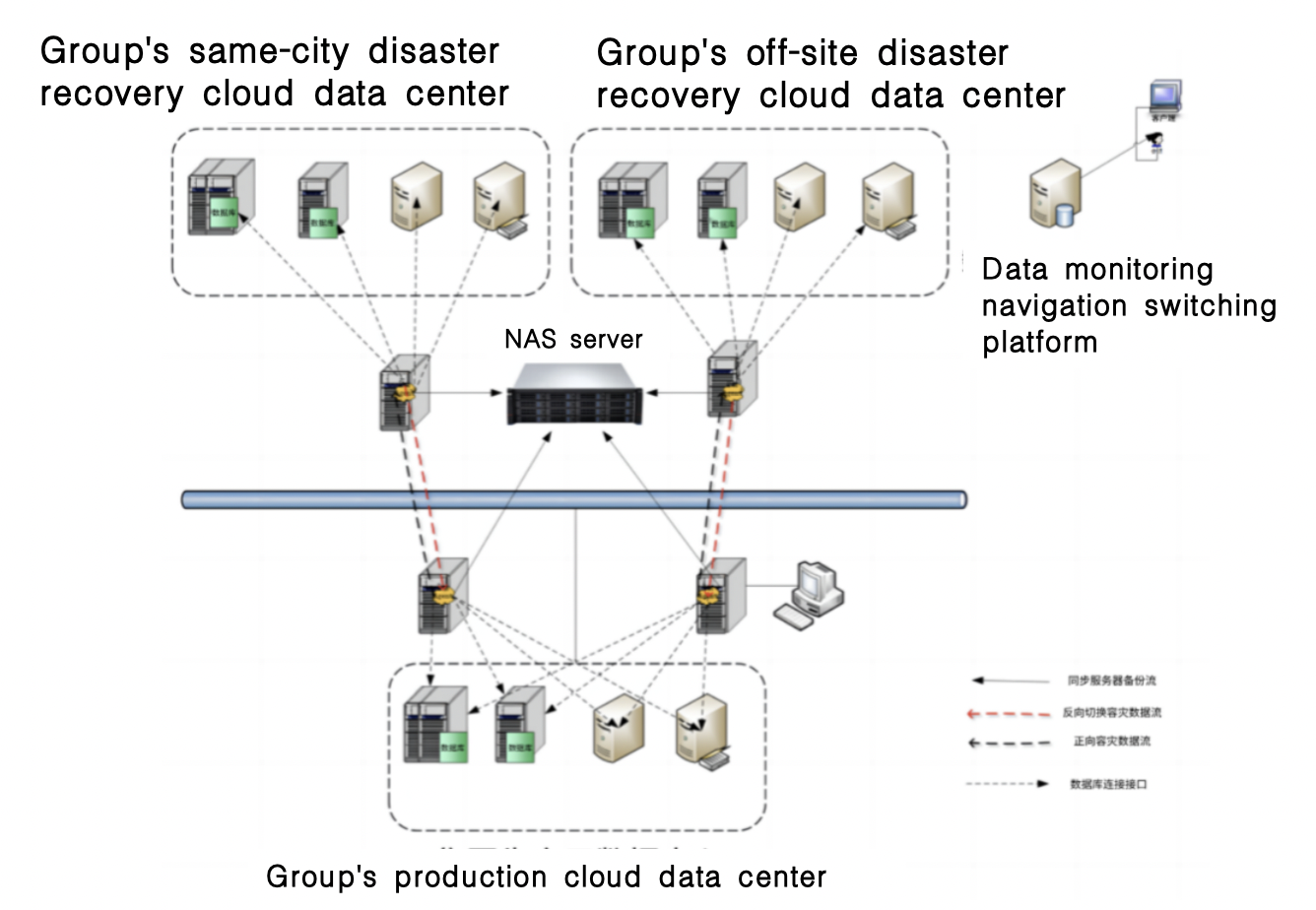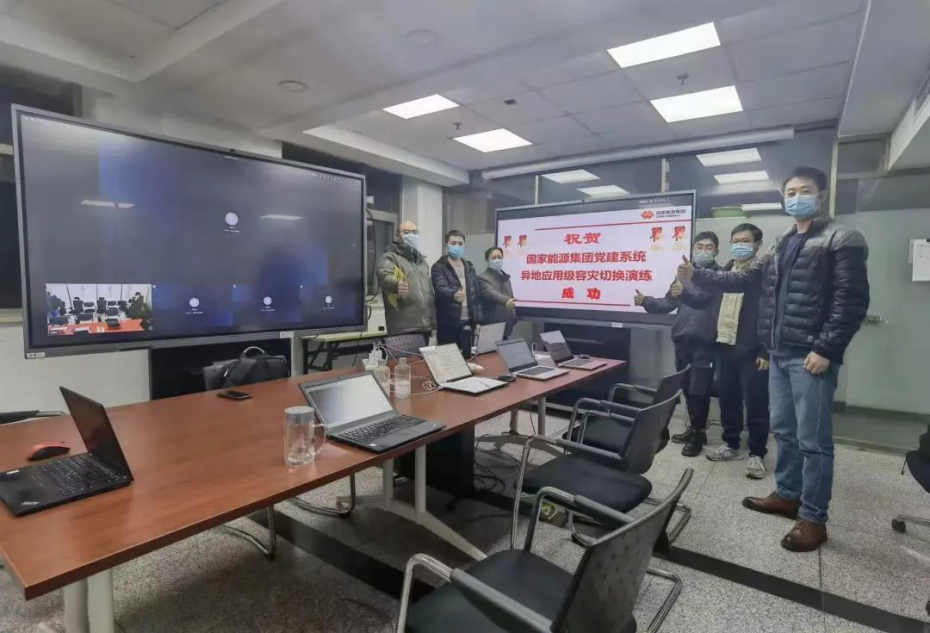一、Background of Disaster Recovery System Construction
State Energy Investment Group Co., Ltd. (referred to as State Energy Group) is a central backbone energy enterprise approved by the Central Committee of the Communist Party of China and the State Council, formed by the joint reorganization of China Guodian Corporation and Shenhua Group Corporation Limited. It has a complete industry chain business including coal, power, transportation, and chemical industry, with industry distribution in 31 provinces, municipalities and autonomous regions in China, as well as in more than 10 countries and regions including the United States and Canada. It is the world's largest coal production company, thermal power generation company, wind power generation company, and coal-to-oil and coal chemical company.
With the smooth progress of the information construction of State Energy Group, the information system has become its important infrastructure, and in the process of business development, it has accumulated many important data assets. In order to avoid interruptions in business operations and huge losses in economic and social benefits caused by various risks and threats, the Thirteenth Five-Year Plan for Informationization of State Energy Group explicitly stipulates the construction of a remote disaster recovery center and the implementation of a two-site three-center disaster recovery mode.

Disaster recovery system solution architecture diagram
The overall design of the database disaster recovery in this case is based on a "dual-site, three-center" architecture. Through the use of DSG SuperSync database logical transaction data real-time replication software, the database data of 30 sets of business systems including group OA, group unified portal, and group unified identity authentication system are replicated in real time to the Baotou remote disaster recovery center.
The remote disaster recovery center database is in a real-time open state, capable of handling business queries, report generation, and other business operations, thereby reducing the pressure on the main production system database. In the event of an unexpected situation with the local main production center database in Beijing, where normal business system operations cannot be restored in a short period of time through routine methods, a database failover can be initiated. This allows the Baotou remote disaster recovery center database to directly take over the business operations of the system and maintain business continuity.
In addition, through the DSG disaster recovery management platform, the disaster recovery systems of 30 business system databases including the group's OA, unified portal, and unified identity authentication system are centrally managed and monitored. Daily maintenance is carried out through a unified monitoring interface, reducing system maintenance costs and increasing the efficiency of maintenance personnel.
In order to ensure the continuity and feasibility of business takeover by the disaster recovery site, DSG and State Energy Group cooperated to conduct disaster recovery switchover drills, in order to verify the data protection capability and system emergency takeover capability of the disaster recovery system, and to form a sound disaster recovery switchover implementation process system.
 National Energy Group's successful remote application-level disaster recovery drill commemoration onsite
National Energy Group's successful remote application-level disaster recovery drill commemoration onsite
The construction of the "two cities, three centers" in this project involves three data centers that each undertake different business and achieve the full utilization of resources. This not only greatly improves the disaster resistance capability of the national energy group and ensures business continuity, but also is a practical application of domestic substitution, which effectively enhances the security and controllability of data. The "two cities, three centers" cloud disaster recovery joint solution also helps users win the "2021 Best Informationization Solution in the Industry," and has been widely recognized by the industry.
 "Best Industry Informationization Solution 2021" Certificate
"Best Industry Informationization Solution 2021" Certificate
三、Advantages of System Design
1.Hot capacity disaster recovery with zero downtime database switching
The disaster recovery database system maintained by DSG SuperSync is always open during the data replication process, ensuring the logical integrity of data replication, as well as the timeliness and reliability of disaster switchover. DSG SuperSync technology provides a continuously available backup database system for the source system. When the source system fails, the application system can access the backup database system in real time, achieving the goal of zero-time switchover for the database system.
2.Heterogeneous system platform, open hardware selection
DSG SuperSync technology is a logical-level data replication technology, which provides users with flexible options for hardware platforms when building disaster recovery systems. It also enables unified disaster recovery support for multiple information systems on different platforms within the same disaster recovery solution architecture.
3.Supporting application requirements for businesses and industries across the board
DSG SuperSync has no special requirements for servers, storage arrays, and transmission bandwidth when building a disaster recovery system, unlike traditional disaster recovery technologies that require high-end disk arrays, servers, and several GB of transmission bandwidth. Therefore, this system is suitable for high-end telecom, finance clients, various government agencies, large enterprises, and also suitable for small and medium-sized enterprises running on PC platforms.
4.Return on Investment (ROI) analysis
Using DSG SuperSync disaster recovery technology, the disaster recovery database is always in an open state, unlike other modes where the disaster recovery database system is unavailable. Therefore, the disaster recovery system maintained by DSG SuperSync can provide data sharing services:
l l Provides fast data extraction for decision analysis and reporting systems;
l l Provides near real-time offline queries to improve query efficiency;
l l Provides real production data for test systems.
The originally required business and production systems that need to run on the main system are completely isolated from the production system, making full use of the resources of the disaster recovery system to distribute the enterprise application load, reduce the impact on the production system, and improve the response efficiency of the service system, thereby transforming the cost center of the disaster recovery system into a profit center.
5.Flexible networking structure and low bandwidth resource requirements
DSG SuperSync uses transaction-based transmission, greatly reducing the amount of data that needs to be transferred during the replication process, resulting in a significant reduction in the amount of data transmitted over the network and lower bandwidth requirements.
DSG SuperSync supports standard TCP/IP network transmission, allowing users to flexibly build disaster recovery network architectures.
The system supports 1:1, N:1, 1:N, and bi-directional disaster recovery structures, improving the flexibility of enterprise disaster recovery structures.
6.Please copy as needed
Query and reporting systems often do not require all of the raw data, so it is entirely possible to replicate data as needed. The DSG SuperSync system supports on-demand replication of specified information, such as specified tables, fields, and conditions, reducing the cost of storage and network bandwidth.
7.Real-time data update
Real-time updates ensure that the backup system quickly reflects changes in the source system, providing timely access to functions such as bill and call detail record queries. After extensive testing, real-time data replication technology ensures that the data between the source and target systems is delayed by less than 10 seconds.
8.Low interference to production systems
DSG real-time data replication technology does not need to obtain change data through any database engine, but rather obtains changes on the source system through the database's own information and transfers them to the destination system without impacting the performance of the production system.
9.Heterogeneous systems can provide more optimization space.
The heterogeneity of the source database system and the target database system mainly include index rules and storage parameters (such as data block size, rollback segment, etc.). Therefore, adjustments and optimizations can be made on the target database according to the business characteristics, completely unrestricted by the source system.
四、Conclusion
In this cloud disaster recovery project, DSG fully cooperated with the State Energy Group to promote the construction of off-site disaster recovery system, and established and improved the database disaster recovery construction plan, database disaster recovery implementation deployment plan, and database disaster recovery switch rehearsal plan, etc. This has helped improve the State Energy Group's information system disaster response, continuous operation capability, and the security of core production data, providing strong technical support for the group's strategic transformation. In the future, DSG also looks forward to helping more enterprises build disaster recovery systems to continuously ensure the security of their data and business continuity.
2024.05.16
Learn more>
2024.04.01
Learn more>
2024.03.25
Learn more>
2024.03.18
Learn more>
2024.03.04
Learn more>
2024.02.19
Learn more>
2024.02.04
Learn more>
2024.01.22
Learn more>
2024.01.15
Learn more>
2024.01.02
Learn more>
2023.12.25
Learn more>
2023.12.20
Learn more>
2023.12.11
Learn more>
2023.12.04
Learn more>
2023.11.20
Learn more>
2023.11.13
Learn more>
2023.11.06
Learn more>
2023.10.30
Learn more>
2023.10.11
Learn more>
2023.09.15
Learn more>
2023.08.01
Learn more>
2023.07.25
Learn more>
2023.07.04
Learn more>
2023.05.29
Learn more>
2023.05.08
Learn more>
2023.03.06
Learn more>
2022.12.28
Learn more>
2022.11.14
Learn more>
2022.09.26
Learn more>